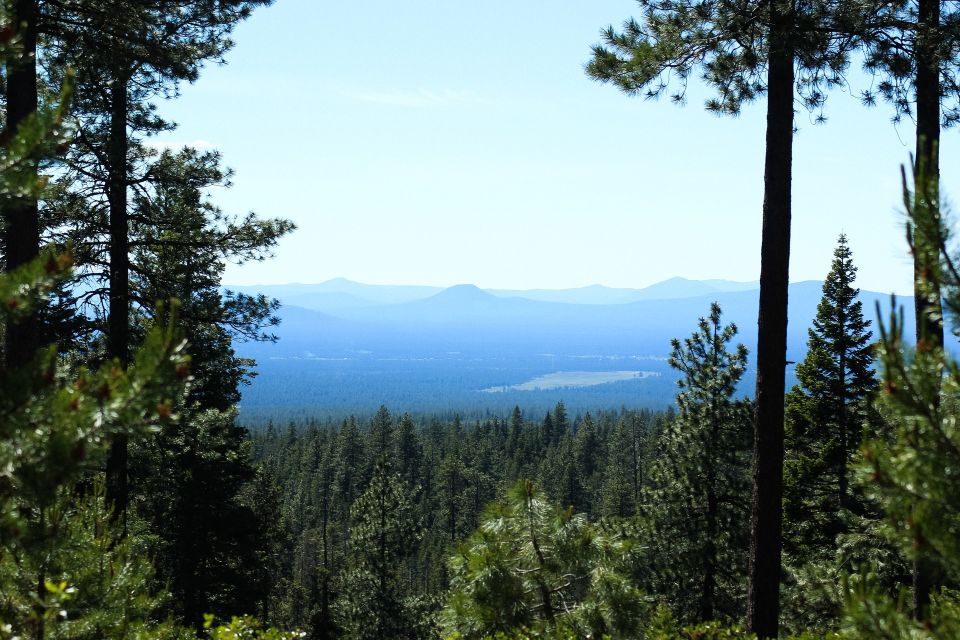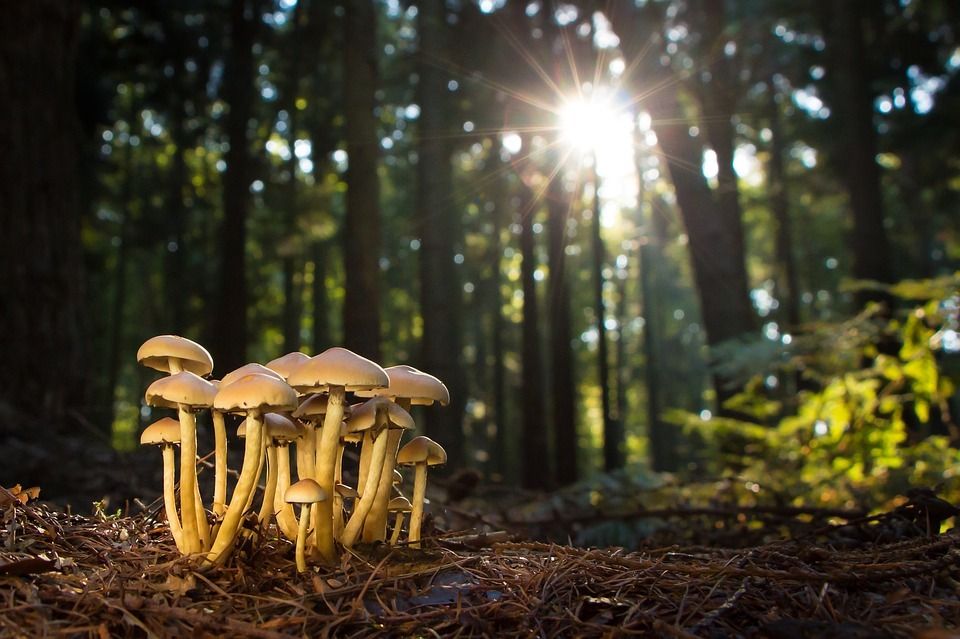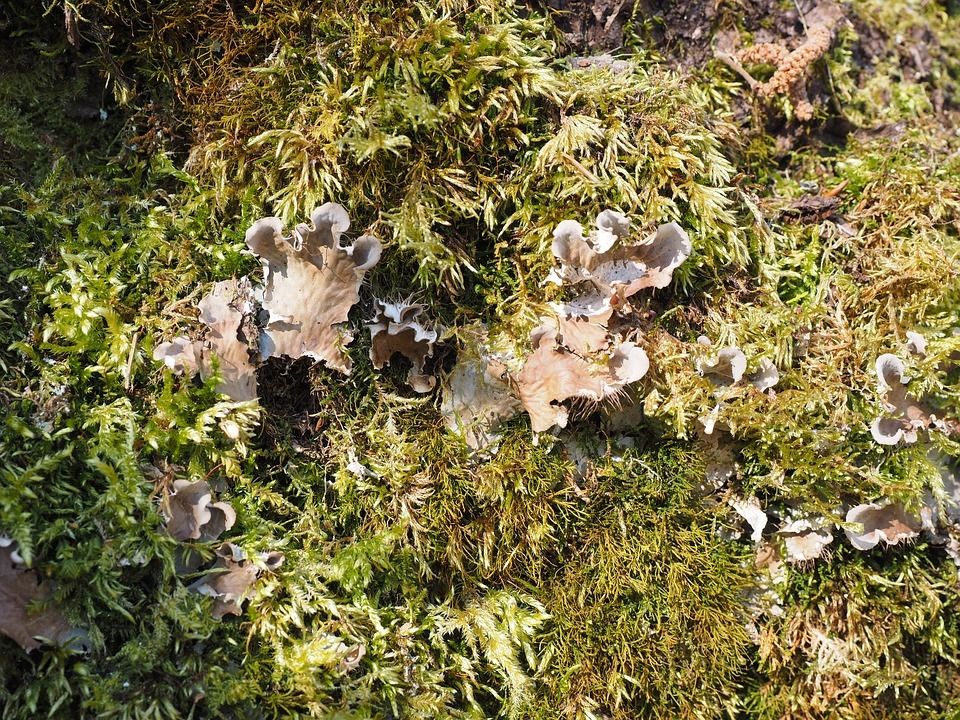War and peace through the internet of trees

Have you ever wondered what trees would say if they could talk? Well turns out they really can communicate with one another, and they have lots to say.
Using their hidden buddies, fungi, they shout out, albeit not loud enough for our ears. You may walk into a forest and think how calm quiet and peaceful it is, but all sorts of shenanigans are taking place under your feet. Those quiet trees are busy supporting other trees who are hard up and even making war. It’s a veritable cacophony of signalling going on down there!
No this is not science fiction or even magical realism, it is nature’s reality!
Many trees have particular fungi that are associated with them, they have a symbiotic relationship, this means they help each other out. The word symbiosis is derived from Greek, and means 'living together.' Which is what they do with great success. The fungi can’t make sugars which the trees can provide, and in turn fungi support the trees in absorbing water and rarer nutrients like phosphates and nitrogen from the soil. This partnership started millions of years ago and has been evolving ever since. It’s so important that this extra help from the fungi may have been one of the reasons that plants first gained a roothold on land from their watery beginnings way before animals were a twinkle in the ocean’s eye. Around 90% of land plants are in mutually-beneficial relationships with fungi. Forests around the world continue to rely on this bond.
Fungi: what are they exactly?
Fungi are amazing, they are a kingdom on their own. They are neither plants nor animals but in some ways contain characteristics of both. However, their structure makes them more similar to insects, due to a substance found in their cell walls (chitin) which is never found in plants. They can’t photosynthesise sugars like plants do but like us have to take their food in from an external source. We may know them in the form of the humble mould or tasty mushroom. This is literally the tip of the iceberg, what is known as the fruiting body. It appears above ground and it’s only a small part of the fungi. The rest is usually invisible to us underground and are diffuse and made up of a spreading network of very narrow, tubular, branching filaments called hyphae. These hyphae are very good at finding and absorbing useful material around them. These fine filaments or fungal threads can also secrete enzymes and chemicals that have an effect on the surrounding environment. It’s these webs of fungal threads that form the tree internet. All of these incredible properties make fungi very useful to trees.
The fungi that partner with trees are called mycorrhizae and their hyphae entwine around and through the host tree’s roots.

And so begins a beautiful friendship
Researchers have found that the woodland floor is covered with a network of these mycorrhizae, connecting up the trees. It’s not just every tree for themselves as we used to think. Groups of trees especially in forests can actually act like a single organism together and communicate using chemical and electrical signals, transmitted through these vast interconnected networks of mycorrhizae. Using this they can share news about attacks from bugs, drought and other dangers. According to Peter Wohlleben in ‘The Hidden Life of Trees’, a single fungus can span an entire forest covering many square miles. Amazingly, just one teaspoon of forest soil can contain many miles of fungus filaments. The largest organism known to man is a fungal network in The Blue Mountains of Oregon, which covers an area of 8.4 square kilometres and is believed to be 2,400 years old.
The networks seem to occur more in well-established and developed forests undisturbed by humans. So far when researchers have looked at our fields and agricultural land where pesticides have been frequently used, relationships between plants and fungi are much less common. Reducing the use of pesticides could also in the long term help out the community of trees and fungi.
This wood wide web works hard, sending nutrients to undernourished trees, sharing information about dangers and even making war on unwelcome plants by spreading toxic chemicals through the network. A 1997 study found that seedlings in the shade, which are likely to be short of food, got more carbon from donor trees. Researchers now believe that large trees help out small, younger ones using the fungal internet. Without this help, many seedlings might not survive. "These plants are not really individuals in the sense that Darwin thought they were individuals competing for the survival of the fittest," says Simard in the 2011 documentary Do Trees Communicate? "In fact they are interacting with each other, trying to help each other survive."
In another bit of research, Johnson found that broad bean seedlings that were not themselves under attack by aphids, but were connected to those that were via fungal mycelia, activated their anti-aphid chemical defences. Those without mycelia did not. An incredible example of how the web of fungi gave those seedlings an advantage against attacks from aphids.
For a tree just being part of the network boosts its immune system, joining with the fungi triggers their immune system to be more efficient and so more resistant to disease. In a tough world these benefits can make all the difference to the survival of a single tree or colony of trees.

It's not all pleasantry…
There is of course a darker side to the wood wide net, some plants can steal from each other using this system. Some plants don't have chlorophyll, so they can’t produce their own energy through photosynthesis. The phantom orchid, gets the carbon it needs by stealing it from nearby trees, and uses the fungi web that both are connected to.
Plants do still have to compete with their neighbours for resources like water and light. As part of that battle, some release chemicals that harm their rivals.
This "allelopathy" is quite common in trees, including acacias, sugarberries, American sycamores and several species of Eucalyptus. They release substances that either reduce the chances of other plants becoming established nearby, or reduce the spread of microbes around their roots.
One of the best-studied examples of allelopathy is the American black walnut tree. It reduces the growth of many plants, including staples like potatoes and cucumbers, by releasing a chemical called juglone from its leaves and roots. The network of mycorrhizae soups up the effectiveness of this process.
Particular tree species tend to have a relationship with particular fungi for example birch has a number of these partnerships, the most familiar being with the story book red and white fly agaric, as well as with the chanterelle mushroom. Scots pine has mycorrhizal associations with over 200 species of fungi in Scotland.
The forest community
In the symbiotic community of the forest, it’s not only trees which share information this way but also other plants, grasses and shrubs. In the past we’ve assumed it’s a dog eat dog world out there but trees act like a community. it’s not in a forest’s best interest to lose its weaker members, the gaps that would emerge could disturb the sensitive microclimate of the forest leading to lower levels of humidity and altered light conditions; both of which could hinder the development of the overall ecosystem and decrease the nutrient pool for all involved.
Next time you’re out and about, have a think about what’s under your feet, there may be a vast fungi network busily exchanging the latest gossip and not just in forests. That bush in your garden could be chatting to the tree in the garden next door. We are still learning more and more about this intimate relationship, its importance and how widespread it is. What we do know is that both fungi and trees need each other to thrive. And surely that’s a lesson us humans could learn from.
Donate to Trees for Cities and together we can help cities grow into greener, cleaner and healthier places for people to live and work worldwide.
Donate